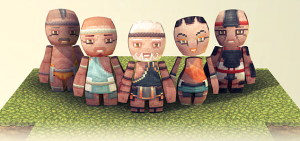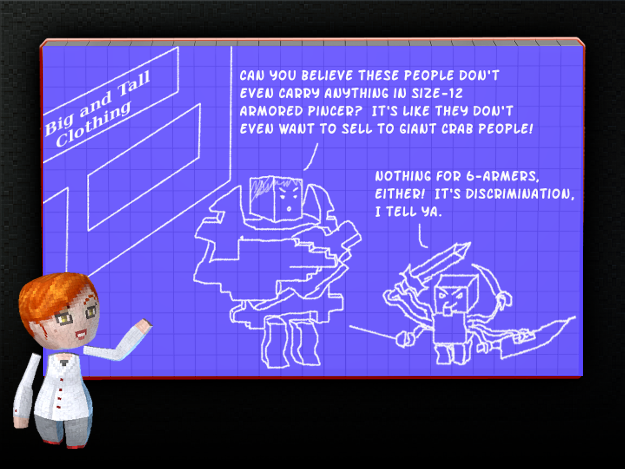
Moving on up the body, today we talk about the “body” piece of how humanoids are assembled. This piece comprises everything between the locomotion piece and the head piece, typically including the torso and arms.
Your body is your temple?
The body part is the core part for “physical” traits, and plays a large role in the capacities of a given species for different physical activities. This can mean the likes of the classical choice between a lumbering brute with plenty of strength but little mobility versus a lithe but frail type, but can also mean more; Some body types have natural advantages that don’t relate strictly to stats, like mole-like arms that let a race dig through soil and softer stone without needing picks or other tools. Another race may have a chitinous armor for skin, being more naturally armored, if perhaps more awkward in their movements. Another still may break the “bodies for physical stats” mold, and have a body that is physically frail, but which has a magic-amplifying power.
In general, we want to offer choices that go beyond being obvious “rogue” or “fighter” races, defined by stat bonuses, and want to give players the chance to play creatures that truly “feel” different to play in very different ways.
I have no arms to hug you with…

Another potent way to change how the player experiences the world is with their character’s arms.
Not all creatures have traditional hands. A winged creature may have to grasp with an awkward opposable thumb on the midpoint of their wings, trading manual dexterity and strength for their capacity for flight. Another creature may have more than two arms, allowing them to carry two-handed tools or weapons in only one equipment slot. On the other hand, some creatures may have a multitude of pincers or tentacles that have to be used in concert to wield a single tool with care. Other races, still, may not have hands at all, and rely upon telekinetic powers to carry equipment and tools.
The various body types (as well as locomotion and head types) mean that they are suited to different types of tools, weapons, and equipment. (Obviously, a shirt that fits a human doesn’t fit a giant beetle-like creature with multiple arms.) There are, however, certain tools that all culture creatures will need to be able to use, just to be able to build their towns. Some races, though, will be able to use different tools more effectively than others. Mole-like creatures may just use metal claw reinforcements rather than an outright pickaxe, and be more efficient tunnelers, still. Meanwhile, a naturally armored body may be a more difficult place to fit artificial armor, and armors that do fit their body are less effective or more bulky.
Creatures and Cultures
Cultures are made up of sentient beings built with the same type of procedural generator as the non-sentient creatures. This means the creatures (both the “monster-like” dangerous creatures, and ordinary “bunny-like” creatures) that fill up lairs may be made up of similar parts to the town-building sentience. Certain physical form components, however, will be exclusive to non-playable creatures, including many torso/arm parts. (Culture-forming sentients will need some form of arm equivalent to be able to use tools.)
Because of this tool-using difference, it may well be that players can find their own sentient species’s “ancient ancestors” that are the same in their other parts, but for their tool-using hands!
- The Imagine Nations Team
Help support the Imagine Nations team and join our crowdfunding campaign. Earn “backer status” and other rewards for supporting us.


I think these characters all look really original.
Thanks James. We think so too!